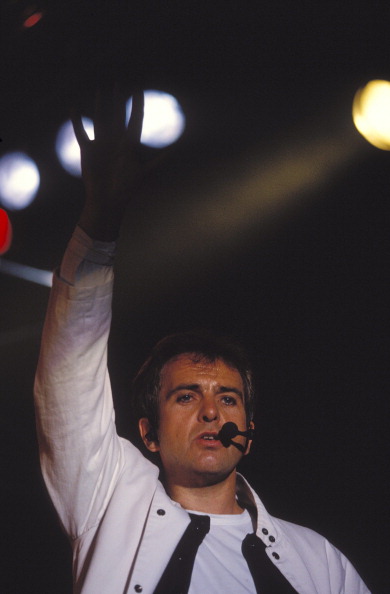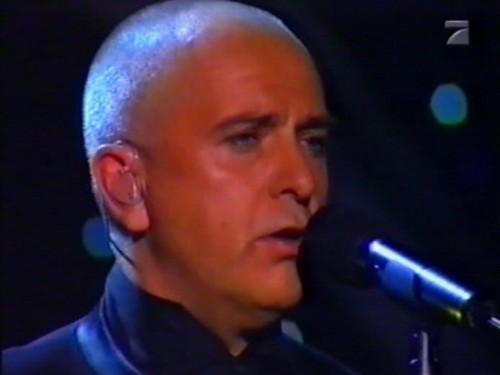Crying My Eyes Out
I’ve broken down in tears during no fewer than four concerts in the last 12 months. No shame in that, I suppose, but it does beg the question: why? Is it simply because the music moves me? Is it because of my past? A sense of loss? A realization that the artists I’m watching won’t be around much longer? Probably all of those things and more, but I’d like to delve a little deeper into the songs that had be blubbering like a fool and attempt to understand what the heck is going on.
Peter Gabriel: “Washing of the Water.” September 2023
I didn’t see this one coming. Last time I saw Gabriel – coupled with Sting in 2016 – he opened with the eerily magnificent “The Rhythm of the Heat,” a song that’s cool as hell, but hardly one that I can relate to. But in 2023, he sat down on a chair with a small keyboard, and beside him sat long-time bassist Tony Levin. Together, they played the quiet, heart-breaking song of pain and grief and a plea for inner peace. That’s probably enough to put me over the edge in any context, but to see these two musicians, together for nearly fifty years, back on stage as a duo? That might have been enough right there, no matter what song they chose to play.
And then there’s my own past to reckon with. Gabriel’s Secret World DVD was on constant rotation in my household when my kids were young. My daughter Jessica wanted to be Paula Cole, a vocalist on that tour from 1993. Envisioning my three young children who watched that concert with me over and over – children who are all now adults living in different time zones – well, that certainly contributed to the waterworks. And to top things off, I was watching the concert with my 21-year-old son, over 36 years after I’d first seen Gabriel on his So tour, when I was an even younger 19. It boggles the mind. It conjures up a time when the future long and wide…you know the drill.
I also knew instinctively that this was the last time I’d see Peter Gabriel live, and that in the not-too-distant future, he’ll no longer be with us.
Geesh. Add that all up – how could I not cry?
James Taylor: “Shed a Little Light” and “That Lonesome Road.” June 2024
I should note first that I can’t listen to “That Lonesome Road” without crying. I find it absolutely heart-wrenching, this tale of a man – much like the man in Peter Gabriel’s ”Washing of the Water” – who’s reeling from his mistakes, untethered, attempting to rise above his pain, to start anew.
But dang, to play an encore of “Shed a Little Light” – a favorite of my wife’s and mine – followed by “Your Smiling Face” and “That Lonesome Road”…I knew, I knew beyond a shadow of a doubt that I would never see James Taylor play again, and I felt a sense of loss for a future without this magnificent artist who so eloquently captures the human condition. It’s like what Mark Twain said about worrying: it’s like paying a debt you don’t owe. I was experiencing grief for a person who’s still living. Kinda dumb. But there it is.
Sara Bareilles” “She Used to be Mind.” August 2024
Okay. Once again, a very touching song. Sara has about a half a dozen that can set me off in a flash. She’s got that gift. And here I was on a beautiful night with my beautiful daughter Sarah at the beautiful Hollywood Bowl. I mean, come on! The first time I saw Sara Bareilles was with both of my daughters at this strange venue – the Scottish Rite Center in Milwaukee – where Bareilles played a solo show prior to the release of The Blessed Unrest. I blogged about that concert back in 2013, and here I was over a decade later, watching her perform this wonderful song about self-acceptance. It killed me.
Keane: “Can’t Stop Now.” September 2024
This isn’t a song that would normally set me off, but there were several things going on here. First was the pure jubilation of finally seeing this band after a few failed attempts, the last one a cancelled show in Nashville due to the pandemic. Second, my daughter Jessica was by my side (and yeah, all four of the cry-fests in this blog involve watching a band with a loved one – no coincidence). Third was the sheer power coming from the musicians on-stage, especially the vocal perfection of Tom Chaplin. Fourth, the fact that in 2020 – just a month after that cancelled Nashville show – I got to play a Keane song with all three of my kids at a little outdoor concert on my neighbor’s driveway while families huddled outside in their safe family bubbles, none of us knowing that this was what life would look like for the rest of the year. And fifth is some serious personal stuff than I can’t delve into on-line, but suffice it to say that I’m aware of life and death, what I have and what I’ve lost, what matters and what doesn’t.
And all of that adds up to tears. Again.
And look, I grew up in a rather undemonstrative family, so I view my ability to cry – in public, no less – as a step in the right directions, generationally speaking. Maybe my kids will have a better chance to be more fearless and open than I’ve been. And maybe in thirty years they’ll be at concert with their adult children, listening to a song that has them breaking down in tears.

